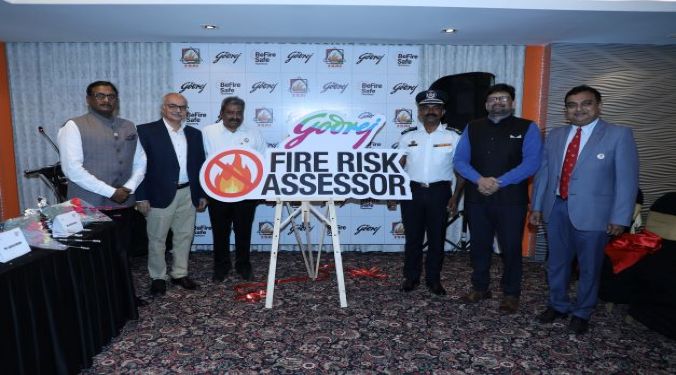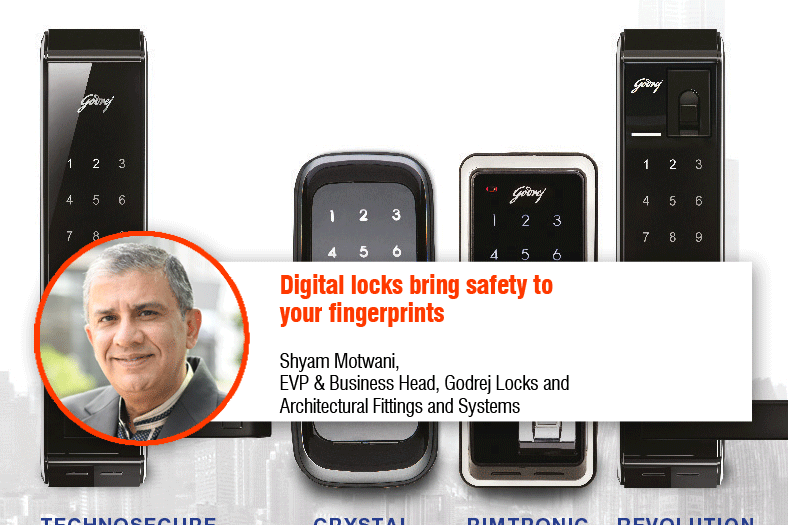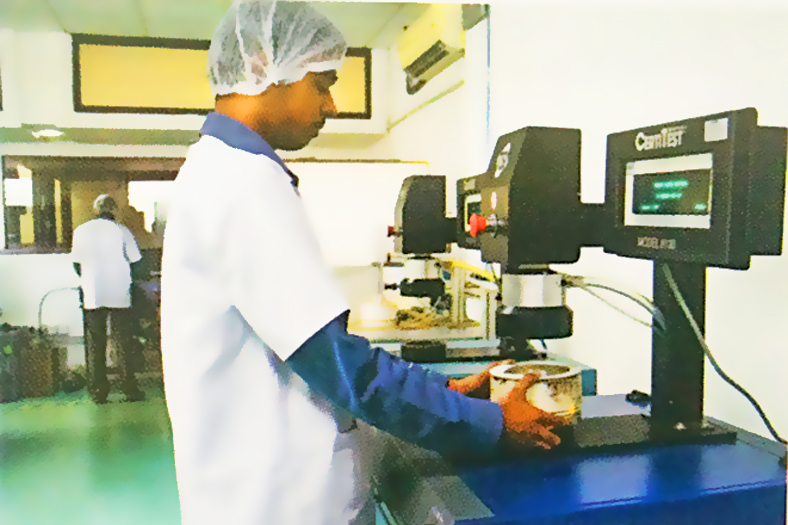
Mobility, IoT, Wi-Fi and Ethernet are common technologies catering to the operational needs of evolving rail networks.
India is witnessing fast-paced growth and expansion in the metro rail segment. Metro rail transit safety is absolutely critical. Passengers must be kept safe at all times, especially during unexpected events. Protecting citizens from violence, theft, crime, and the intentional targeting of public facilities requires the right tools. When an incident occurs, authorities need to take action and make the right decisions. A high-performance, high-definition and highly-reliable surveillance system is essential.
According to NASSCOM-Deloitte report ‘The Internet of Things – Revolution in Making’, “India is a rapidly growing hub for IoT solutions with market value expected to be US$9 billion and an installed unit base of $ 1.9 billion by 2020. In terms of revenue, Transportation and Logistics is expected to drive industry specific IoT revenue and will reach $ 491 billion by 2020.”
The rail transportation is one of the early adopters of IoT and Big Data technology trends. Devices and sensors along the tracks and inside stations have helped enhance operators’ situational awareness and keep the rail system secure. But more and more, operators are relying on data to optimise business, too.
Indian metro rail companies are managing and monitoring video surveillance data feeds, turnstile entrance access control data, X- ray baggage scanners, door metal frame detectors (DFMD) and hand held metal detectors (HHMD) systems very efficiently. Further to physical security systems, Big Data and IoT innovations can bolster security in the country’s metro rail network.
Role of IoT in enhancing security at metro stations
Big Data and IoT – transforming the metro stations
Ashish P Dhakan, MD & CEO, Prama Hikvision India Pvt Ltd, says, “The Big Data and IoT can help metro rail companies to enhance the safety and security of metro stations by setting-up video analytics to monitor traffic flow, around the station, monitoring the number of people coming through the ticket barriers, or waiting in line at the ticket window.”
He adds, “In case of sudden and unexpected surge in the number of commuters on metro station can be detected in real-time and extra security personnel can be deployed for the crowd management, which can prevent cases of chaos and stampede.”
With help of information leads and data sets, metro rail station managers can quickly adjust their staffing in real-time to ensure customers are served as quickly as possible. The introduction of IoT and Big Data can enable surveillance systems to perform logical processing and intelligent video analytics, enhancing the usability of data and reducing response latency.
Metro rail stations can enhance efficiency with the help of IoT solutions. Data collected from metro rail station turnstiles and entrances, can help the operator redeploy or redirect trains. Sensors detecting a change in temperature can trigger air conditioning. The available structured data can be later harnessed for commercial purposes.
Making metro stations more secure
Internet of Things (IoT) is a much sought after solution these days as it brings in a lot of flexibility by providing information on every connected product at the required periodic intervals.
Metro rail systems rely on technology for a range of operational needs that contribute to a pleasant and safe passenger experience besides aiding smooth functioning. However, in order to provide room for IoT to evolve, the approach towards IT infrastructure needs to change as it entails a supportive rail system. Varun Sachdev, Managing Director, Warden Security Systems Pvt Ltd, says, “Mobility, IoT, Wi-Fi and Ethernet are the common technologies that are taking on bigger roles in evolving rail networks that keep passengers safe and happy.”
He adds, “IoT platforms function and deliver valorous kind of intelligence and data using a variety of sensors. They serve to collect data, pushing it and sharing it with a whole network of connected devices. All this collected data makes it possible for devices to autonomously function, and the whole ecosystem is becoming “smarter” every day.”
Latest offerings
Artificial Intelligence (AI) and Deep learning technologies
Hikvision has designed solution for metro rail security requirements. Hikvision metro rail security solution includes the following components:
• Coach surveillance based mobility products
• Latest CCTV cameras for platforms
• Advanced storage products
• Entry and exit artificial intelligence cameras
• Deep learning based analytics and value added features
• Access control
• Boom barriers
• UVSS (Under Vehicle Surveillance System)
• Body worn cameras
Hikvision’s latest video surveillance products offer the latest Artificial Intelligence (AI) and Deep learning technologies.
Sensors in IoT space
By combining a set of sensors and a communication network, devices share information with one another and are improving their effectiveness and functionality.
The key sensors which are used extensively in the space of IoT are as follows:
Temperature sensors, proximity sensors, pressure sensors, water quality sensors, chemical sensors, gas sensors, smoke sensors, IR sensors, level sensors, image sensors, motion detection sensors, accelerometer sensors, gyroscope sensors, humidity sensors and optical sensors.
By using the sensors, Warden can provide solutions to the metros on the following:
• Garbage/waste collector box monitoring.
• Switching on the lights depending on the light conditions.
• Integrating image sensors to provide information on the crowd on the platforms so as to ensure necessary preventive care is taken to avoid an accident or detection of left baggage/foreign object on the platforms.
• Raising alarms in case of smoke, or in case of motion detection in secure areas.
• People counting by integrating with the flap barrier and identifying the load on the station, thereby routing traffic internally accordingly.
• Identifying leakage of rain water or any other liquid at the necessary locations.
Metro-specific or journey-scheduler apps can be created by Warden while information related to the trains, traffic, seat availability, route planning and even payments can be managed through the app, thereby bringing greater flexibility, ease of use and comfort for the passengers. This can be further expanded to provide real-time updates on traffic enroute to the metro station (by linking the app to the traffic congestion info), availability of cabs, parking space availability at the stations (for two wheelers and four wheelers) apart from various other necessary information can be provided to the users, so that they can plan their journey at the comfort of their homes or offices.
Major hurdles to maintain security at stations
Lack of trained security professionals
The metro rail in India is fast evolving as a popular mode of urban transportation, managing the commuters’ security at metro stations is a mission critical challenge that every metro security manager faces. Dhakan says,“The key hurdles include lack of trained security professionals, timely maintenance and monitoring of security and surveillance data.”
The fast-evolving technology is another challenge for the original equipment manufacturer (OEM) and system integrators’. In any metro security project the scope for consideration of latest technology and new requirements emerges in the post construction phase. This remains a major challenge for any metro rail project since it is planned in early stage, due to which almost all the key components and the security and surveillance system specifications remains fixed. The policy framework leaves no room for adaptation of the latest technology available at the time of execution.
Security: main hurdle in metro stations
One of the major concerns at metro stations is security which could be ironed out using IoT. Sachdev says, “IoT solutions can provide support in this arena as well, by integrating IP cameras and data analytics to predict behavioural patterns and further identify the known offenders from the database. User profile generation and monitoring would also help the security at the gates to have prior information and can help prevent unruly incidents at the stations.”
Similarly, unattended baggage, foreign objects left in the stations can be identified and necessary actions taken to ensure the safety of passengers. Reducing costs of maintenance by limiting the manpower deployed and investing in the technology would be the way ahead.
The key hurdles include lack of trained security professionals, timely maintenance and monitoring of security and surveillance data.
Ashish P Dhakan, MD & CEO, Prama Hikvision India Pvt Ltd
Mobility, IoT, Wi-Fi and Ethernet are the common technologies that are taking on bigger roles in evolving rail networks that keep passengers safe and happy.
Varun Sachdev, Managing Director, Warden Security Systems Pvt Ltd
Cookie Consent
We use cookies to personalize your experience. By continuing to visit this website you agree to our Terms & Conditions, Privacy Policy and Cookie Policy.








